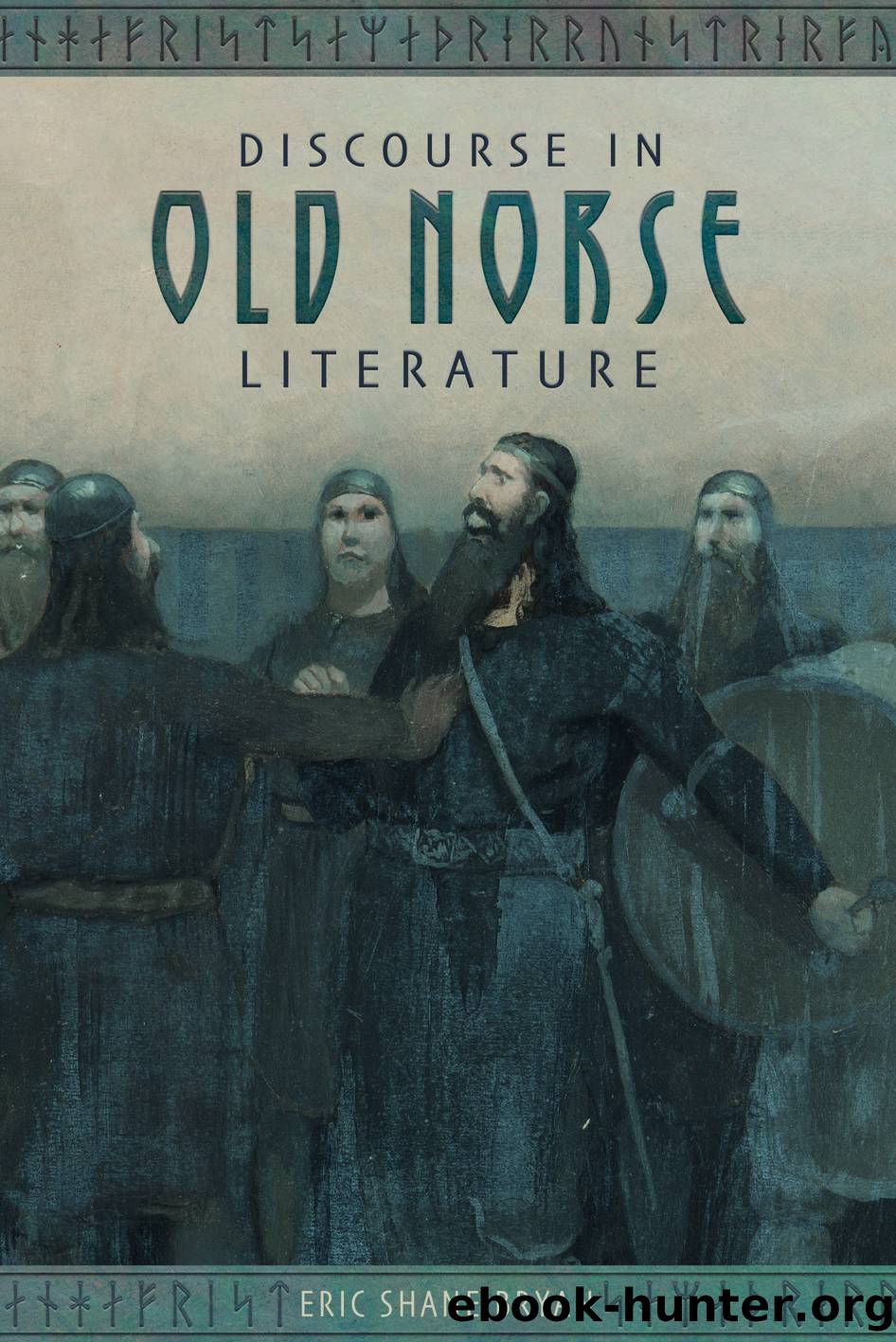Discourse in Old Norse Literature by Bryan Eric Shane; Rikhardsdottir Sif; Larrington Carolyne

Author:Bryan, Eric Shane; Rikhardsdottir, Sif; Larrington, Carolyne
Language: eng
Format: epub
Publisher: Boydell & Brewer, Limited
Published: 2021-06-19T00:00:00+00:00
Gunnlaugrâs Tour of the North
In other Ãslendingasögur, similar criticism of leaders in the North is executed through dialogue rather than narrative, depicting an Icelandic cultural identity that goes beyond just a sense of self-awareness and social consciousness. In the course of Gunnlaugs saga Ormstungu, Gunnlaugr takes a tour of the North, visiting the leaders of Hlaðir, Norway; London, England; Dublin, Ireland; then the Orkney Islands; Skarar and Uppsala, Sweden; back to England; back to Norway; and finally back to Iceland.30 Gunnlaugr in fact meets with every meaningful leader in the Anglo-Norse world with the (conspicuous?) exception of Sveinn Forkbeard in Denmark. All of these leaders were Norse speaking except Ãþelræd. However, the saga writer makes the well-known claim that âthe language in England was then the same as that spoken in Norway and Denmarkâ (â[e]in var þá tunga á Englandi sem à Nóregi ok à Danmörkuâ), an assertion that has been a source of interest and debate for scholars who argue for an affinity between Old English and Old Norse languages.31 It is difficult to prove the validity of the sagaâs statement, but such arguments may be missing another important point. Regardless of the historical or linguistic validity of the claim, the saga writer aims to establish a literary and cultural context in which the titular character of the saga is literally conversant with leaders of the northern medieval world. Gunnlaugrâs ability to converse with these leaders is the key factor to understanding the saga because, as I argue here, it is through Gunnlaugrâs verbal exchanges with these leaders that the saga writer articulates a commentary on the socio-political conditions of the northern world. Thus, a pragmatic analysis of Gunnlaugrâs verbal exchanges with these leaders affords the opportunity to see how at least one saga writer perceives Icelandâs proximity to and perception of the geopolitical situation in the North just after the turn of the millennium, when the saga is set.
When Gunnlaugr appears before Earl EirÃkr at Hlaðir, the earl notices that Gunnlaugr has a nasty boil on his foot (which is never explained). The earl remarks that Gunnlaugr is not limping, to which Gunnlaugr responds that one should not limp as long as his legs are the same length. One of the Earlâs followers, Ãórir, takes exception to Gunnlaugrâs comment and says, âÃessi rembisk mikit, Ãslendingrinn, ok væri vel, at vér freistaðim hans nökkutâ (âThis Icelander puffs himself up quite a lot, and it would be good if we tested him a littleâ).32 It is unclear what type of test Ãórir has in mind, but it is instructive to compare this scene with the verbal exchange in Beowulf in which Unferð and Beowulf argue about the swimming contest with Breca.33 Both Ãórir and Unferð are close to their lords â Ãórir is hirðmaðr (bodyguard or follower) to Earl EirÃkr while Unferð âæt fótum sæt fréan Scyldingaâ (sat at the feet of the lord of the Scyldings);34 both Gunnlaugs saga and Beowulf depict a confident foreigner entering the court of
Download
This site does not store any files on its server. We only index and link to content provided by other sites. Please contact the content providers to delete copyright contents if any and email us, we'll remove relevant links or contents immediately.
The Power of Myth by Joseph Campbell & Bill Moyers(925)
Half Moon Bay by Jonathan Kellerman & Jesse Kellerman(911)
A Social History of the Media by Peter Burke & Peter Burke(883)
Inseparable by Emma Donoghue(844)
The Nets of Modernism: Henry James, Virginia Woolf, James Joyce, and Sigmund Freud by Maud Ellmann(740)
The Spike by Mark Humphries;(719)
A Theory of Narrative Drawing by Simon Grennan(707)
The Complete Correspondence 1928-1940 by Theodor W. Adorno & Walter Benjamin(705)
Ideology by Eagleton Terry;(659)
Bodies from the Library 3 by Tony Medawar(649)
Culture by Terry Eagleton(646)
World Philology by(645)
Farnsworth's Classical English Rhetoric by Ward Farnsworth(641)
A Reader’s Companion to J. D. Salinger’s The Catcher in the Rye by Peter Beidler(614)
Adam Smith by Jonathan Conlin(608)
High Albania by M. Edith Durham(592)
Game of Thrones and Philosophy by William Irwin(592)
Comic Genius: Portraits of Funny People by(581)
Monkey King by Wu Cheng'en(577)
